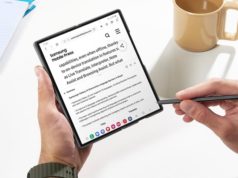Compared with other device markets, the tablet market will be relatively quiet in 2017, reports Taiwan-based researcher TrendForce.
Global IT market research firm TrendForce revealed its 2017 industry forecast Nov. 10, predicting rising prices in most component markets.
The Taipei-based researcher, which has a membership base of 410,000 subscribers, provides analysis and market forecasts of dynamic random-access memory (DRAM)manufacturers’ capacity and output volumes and supply and demand reports.
It also offers DRAM shipment information and price reports on products such as motherboards, servers, graphic cards, desktop PCs and notebook PCs.
Here is a summary of presentations made by TrendForce analysts:
–Smartphone and television shipments will grow in 2017, and display panel supply will be an important factor guiding the dynamics of the consumer electronics market.
–In 2017, vendors in five major consumer electronics product markets — LCD TVs, LCD monitors, notebooks, tablets and smartphones — will improve their profitability; in response to consumer demand, sizes and resolutions of mainstream LCD TV sets will increase. TV sets also will incorporate more smart features and internet-connected services. In the LCD monitor market, main product development trends include size increase, greater adoption of the wide viewing-angle technology and a focus on products for niche applications.
–As for notebooks, TrendForce said next year’s highlight will be the increasing sales of displays featuring full high definition (FHD) or higher resolutions. Compared with other device markets, the tablet market will be relatively quiet in 2017.
“Tablet makers are finding it difficult to increase their product margins due to the ubiquity of low-cost models. Branded vendors therefore are unlikely to commit significant resources into developing tablets in the future,” TrendForce said.
–In the smartphone market, competing brands next year will continue to follow Apple’s lead and increase the number of devices that are equipped with AMOLED displays. “Generally speaking, TV and smartphone shipments will continue to expand in 2017,” TrendForce notebook analyst Anita Wang said. “However, the supply of panels from the display industry will heavily influence the overall shipment results for the five major product markets.”
DRAM Industry Will Increase Profits in 2017 as Supply Remains Tight
Strong demand for smartphones and servers has spurred the top three DRAM suppliers to transfer their production capacity from making PC DRAM to making mobile and server DRAM. As a result, prices of PC DRAM made a complete turnaround from being on a decline in the first half of 2016 to rising sharply in the second half. The price surge in the PC DRAM market has also helped lifted prices of DRAM for other applications.
“Capital expenditure growth of the top three suppliers will be fairly moderate in 2017,” said Ken Kuo, research director of DRAMeXchange. “Plans for capacity expansion and technology migration will be much more scaled back compared with the efforts of past years because suppliers will generally want to maintain high product margins. With supply expected to remain tight, the DRAM industry’s profit outlook for next year is very optimistic.”
Progress on 3D-NAND Will Be Top Priority for NAND Flash Industry in 2017
As NAND flash suppliers accelerate their development of 3D-NAND manufacturing in the second half of 2016, there has been a corresponding drop in the overall production of 2D-NAND (planar NAND) memory. This situation is compounded by rising smartphone demand during the peak sales season, leading to a NAND Flash supply shortage.
Therefore, undersupply in the NAND Flash market will persist in 2017. Whether the market will reach equilibrium will depend on the progress that suppliers have made in their development of 3D-NAND products for mobile and SSD applications.
Though Apple launched Apple Watch Series 2 earlier this year, the next generation of the device offers little new in terms of functionality and services. Thus, Fitbit is expected to remain the shipment leader in the global wearable device market in 2016.
In addition to developing the wearable devices such as smartwatches and smart bands, consumer electronics brands have also placed a lot of investment in virtual reality hardware this year.
Though the general demand for VR devices is strong, Jason Tsai, TrendForce’s wearable device analyst, noted that the supply has not increased accordingly. “The ongoing shortage of Active Matrix OLED (AMOLED) panels will prevent major VR device brands such as HTC, Oculus and Sony from expanding shipments well into next year,” Tsai said.
TrendForce estimates that shipments of VR devices worldwide for 2016 will amount to only 2.91 million units, and the persistent undersupply of AMOLED panels will limit VR device shipments. For 2017, TrendForce projects annual VR device shipments worldwide to reach 5.1 million units.






